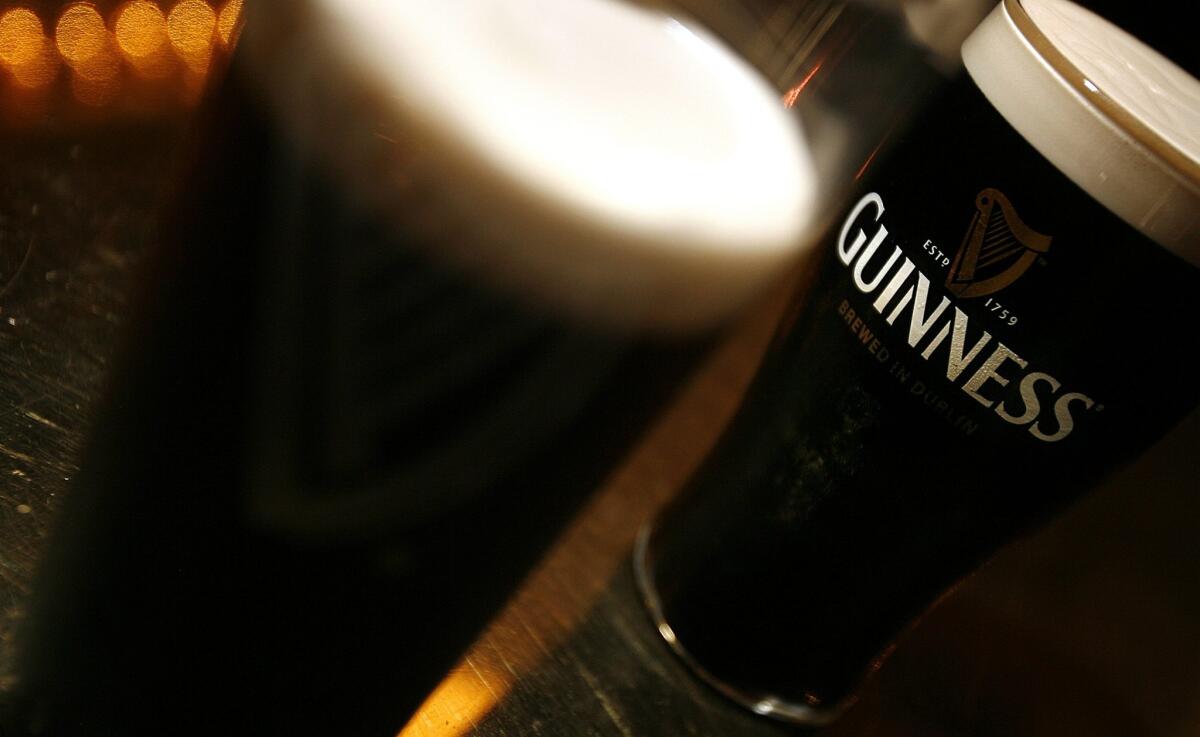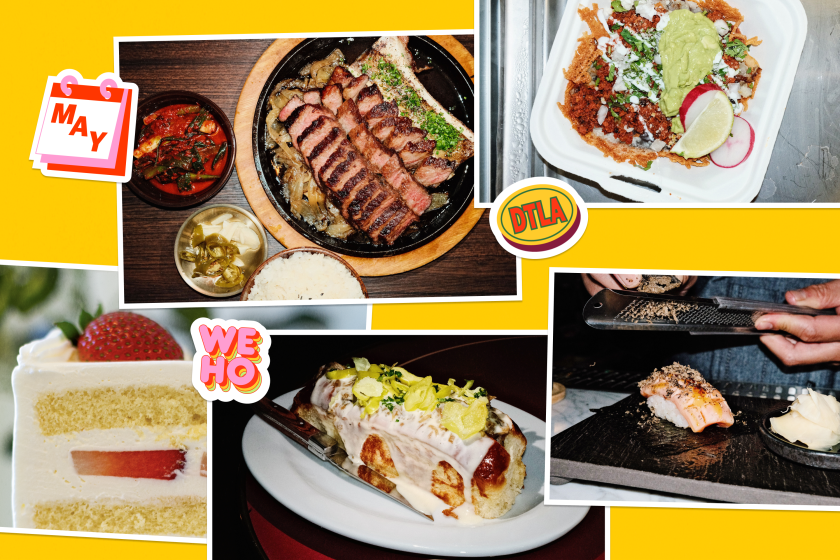Green beer this St. Patrick’s Day? Try black or red Irish beer instead

Don’t you think that you’ve outgrown chugging dyed-green beer to celebrate March’s biggest drinking holiday? Why not turn to an inky black beer or a brilliant red ale this year instead?
After shamrocks, a pint of Guinness might be the most widely recognized symbol of St. Patrick’s Day, and the pitch-hued brew is an Irish national treasure.
Developed in the 19th century, the stouts of the Guinness brewery became a worldwide phenomenon led by the brewery’s flagship dry stout. So popular was the Guinness single stout, and so often imitated, that an entire style of beer has developed to encompass the brew’s unique characteristics.
What makes a pint of Irish dry stout so unique? Visually, the pint is unmistakable and striking in the glass: a beer so black topped with a luxurious — delicate even— pearly froth birthed from a mesmerizing cascade of minute bubbles. The brew is colored by, and received much of its flavor from, roasted barley. The unmalted grain is roasted at high temperatures until well blackened, and it provides both the deep espresso flavors and the subtle acidity that underline the flavor profile of an Irish dry stout, as well as the namesake ashy-dry finish.
A generous hopping provides the earthy and herbal notes and compounds the roasted bitterness from the black barley. That dense head and creamy body is a result of the nitrogen gas infused into the brew, either by the specially nitro tap system or the signature “widget” — that curious bauble that rattles around in the empty can of Guinness Draught.
Although Guinness, and by association most Irish dry stouts, have the reputation of being dense and heavy — how often have you heard a pint called “a meal in a glass”? — the reality is that they are really rather light in body, alcohol and even calories.
With an alcohol content of just around 4%, these beers were designed for long evenings in the pub, and their low strength and bone-dry finish means that a pint of Guinness has just 160 calories. (The average American IPA has closer to 300.) Sláinte, indeed.
Irish dry stouts have one other quality that makes them perfect for St. Patrick’s Day: They’re an adroit accompaniment for corned beef. The salty beef is intensified by the dryness and acidity of the beer, which can tease out nuances of the curing spices’ flavors. Strangely refreshing, the stout’s bitterness will cut the richness of the dish and invigorate the palate for the next bite.
If neither insipid green or flavorful black beer are colors that you’d like to see in your glass this St. Patrick’s Day, there is one other shade you can call on: Irish red ales.
The style was nominally popularized by brewers at Coors in the waning decades of the last century, and their Killians Irish Red Ale is perhaps the best-known example of the style. Funny story: That brew is not even an ale; it’s a lager.
Although Irish red ales have some historical tie to the isle, it’s a tenuous one. Regardless, these ruddy off-dry ales have been embraced by American craft breweries (and especially brewpubs) looking for an approachable yet still flavorful, brew. They showcase toffee and caramel flavors under a hint of toasted bread and a waft of hop aroma.
If you have the chance, try the incomparable Irish Red from Orange County’s TAPs Fish House or its spiritual successor made at Golden Road Brewing.
But black or red — or even green, if you must — raise a glass this St. Patrick’s Day in a salute to Irish brewing tradition.
More to Read
Eat your way across L.A.
Get our weekly Tasting Notes newsletter for reviews, news and more.
You may occasionally receive promotional content from the Los Angeles Times.






